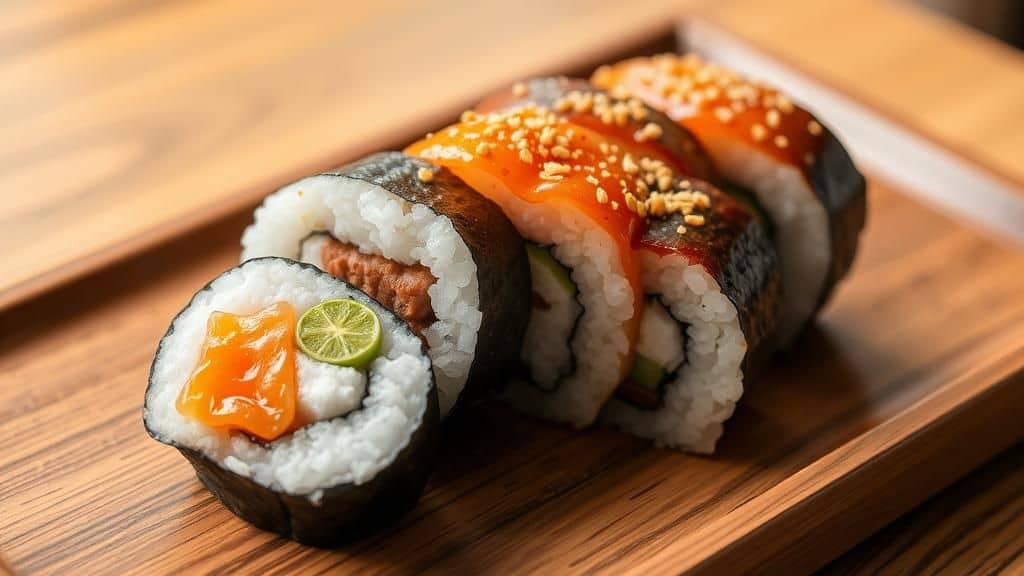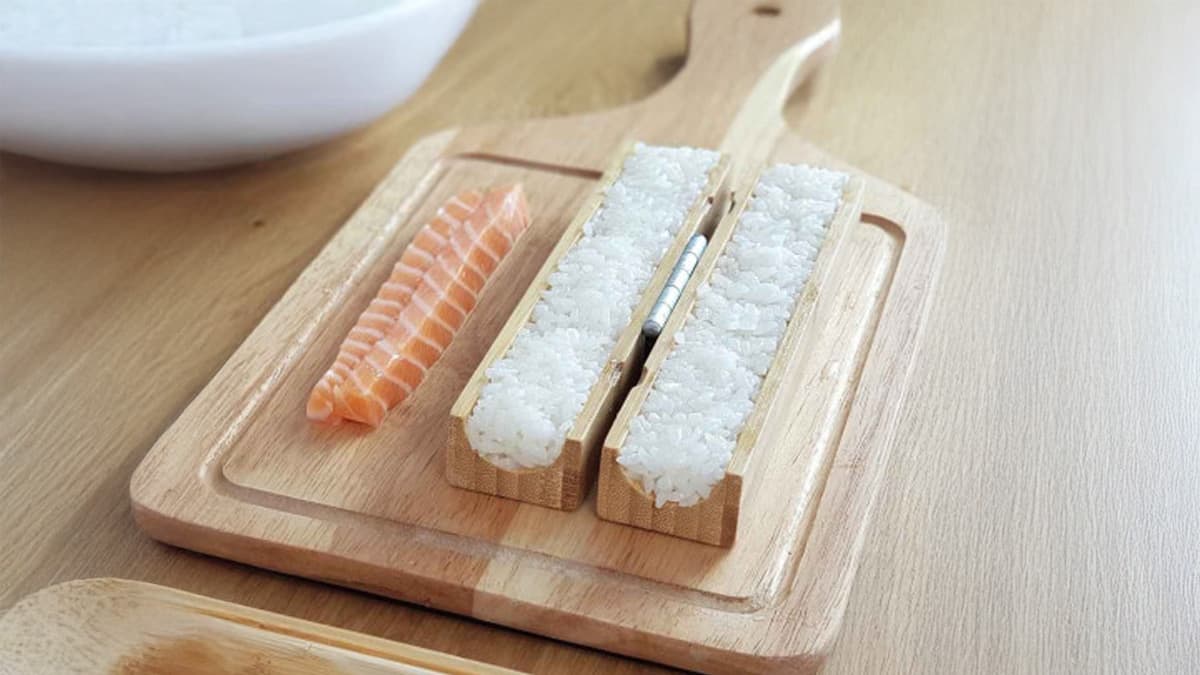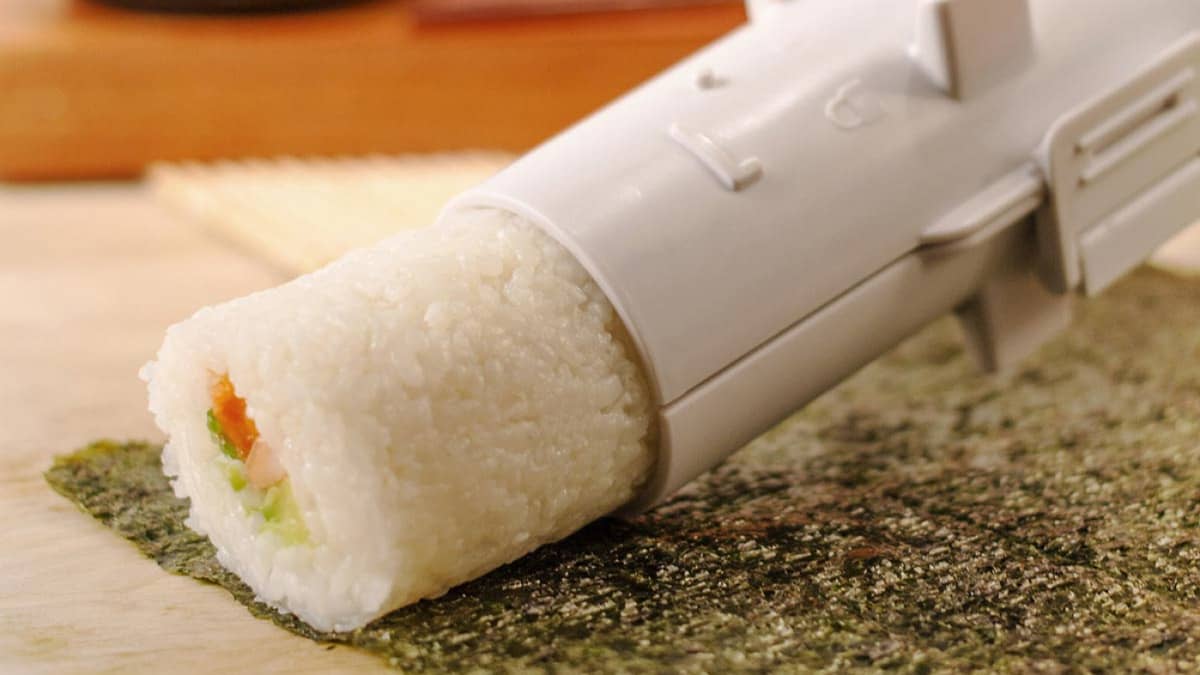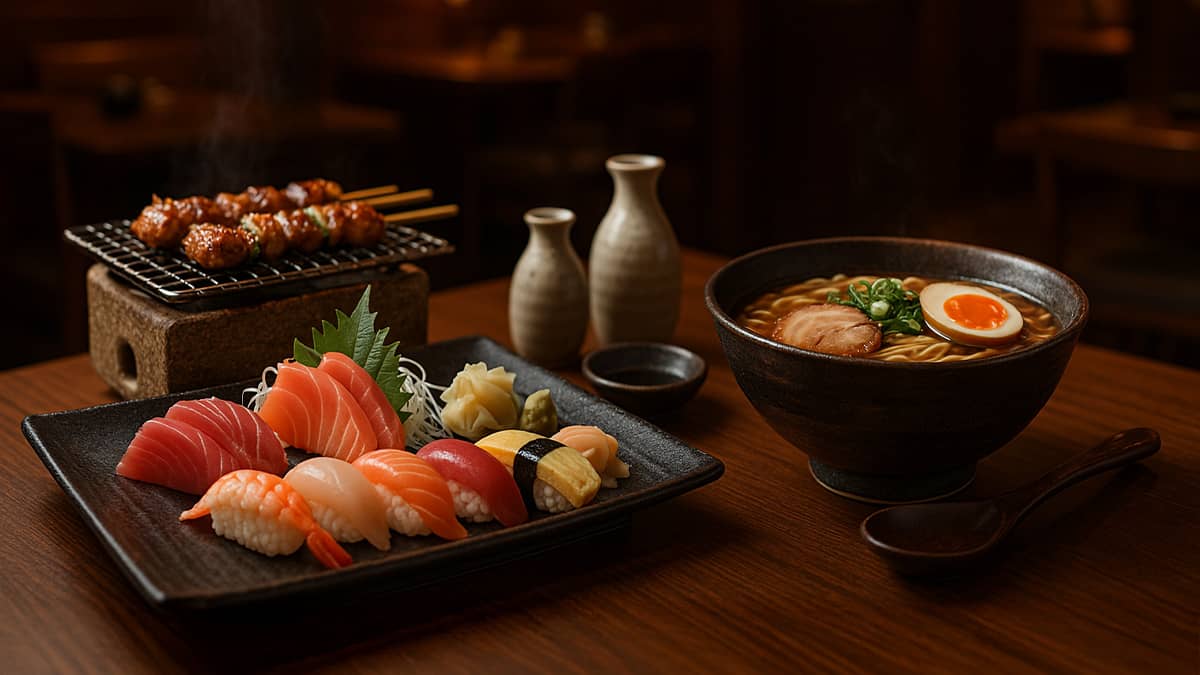What is the ideal amount of sushi per person?

Sushi, those small bites of vinegared rice topped with raw fish, vegetables, or other delicacies, has become a worldwide favorite. Whether for a casual evening with friends, a romantic dinner, or a special celebration, sushi is always a great choice. But the question that often comes up is: How much sushi should I plan for per person? Determining the ideal amount can seem tricky, as it depends on several factors, from the diners' appetites to the proposed side dishes. This article will guide you through the various considerations to ensure your next sushi party is a success.
Understanding the Different Types of Sushi and Their Servings
Before diving into the numbers, it's essential to understand the different types of sushi and their composition. Each type has a different size and density, which influences the amount you should plan for per person.
Makis: Classic Rolls
Maki is probably the most well-known type of sushi. It consists of rolls of rice and filling wrapped in a sheet of nori seaweed. A maki roll is usually cut into 6 to 8 pieces. Maki is often smaller and lighter than other types of sushi, which means you usually need more to satisfy your appetite.
Nigiris: Rice Bites
Nigiris consist of a ball of vinegared rice topped with a slice of raw fish (often salmon, tuna, or sea bream). A nigiri is a more substantial bite than a maki, as it contains a significant amount of rice. Usually, 2 to 3 nigiri are enough for a reasonable portion.
Sashimi: Raw Fish Without Rice
Sashimi is sliced raw fish served without rice. It is often accompanied by soy sauce, wasabi, and pickled ginger. Sashimi is a great option for those who prefer a lighter, protein-rich dish. The amount of sashimi served depends on the variety and the size of the slices, but generally 5 to 6 slices per person are sufficient as an appetizer.
Uramakis: The Reverse Scrolls
Uramaki, or inverted rolls, are similar to maki but with a different configuration. The rice is on the outside of the roll, while the nori seaweed is on the inside, surrounding the filling. Uramaki are often more elaborate and can contain a variety of ingredients, such as avocado, spicy mayonnaise, or fish roe. They are generally larger than maki and therefore more filling.
Factors Affecting the Amount of Sushi per Person
Several factors must be considered when determining the ideal amount of sushi per person. The appetite of the guests, the side dishes offered, and the type of event are all important elements to consider.
The Appetite of the Guests
Your guests' appetites are the most obvious factor. If you know your guests well, you probably have an idea of their average appetite. Young adults and those with larger appetites will need more sushi than children or the elderly. It's always better to plan for a little more than too little, especially if you have hungry guests.
The Accompaniments Offered
Sides play a crucial role in determining the amount of sushi needed. Offering a variety of appetizers, soups, and salads will help your guests feel less hungry for sushi. Miso soup, seaweed salad, or edamame are excellent side dishes that can help balance the meal and reduce the amount of sushi required. A meal consisting solely of sushi will require more per person than a meal with multiple courses.
The Type of Event
The type of event you're planning also influences the amount of sushi you'll need. For a light lunch or appetizer, a small amount of sushi may be sufficient. For a full dinner, you'll need a larger amount. Similarly, a sushi buffet will require a greater variety and quantity of sushi than a sit-down meal.
Time of Day
The time of day can also affect the amount of sushi people consume. People tend to eat less at lunch than at dinner. Therefore, you may need to plan for less sushi for lunch than for dinner.
General Recommendations and Tips for Estimating the Ideal Quantity
While there is no hard and fast rule, here are some general guidelines and tips to help you estimate the ideal amount of sushi per person.
Basic Quantities to Plan
Generally, for a full meal, plan on about 8 to 12 pieces of maki per person. If you're including nigiri, add 2 to 3 pieces per person. For sashimi, 5 to 6 slices per person is a good starting point, especially if you're serving it as an appetizer. If you're serving other dishes, reduce these quantities accordingly.
Tips for a Sushi Buffet
For a sushi buffet, variety is key. Offer a selection of maki, nigiri, uramaki, and sashimi. Make sure you have enough of each type to satisfy all tastes. Plan on about 12 to 15 pieces of sushi per person for a buffet, taking into account the presence of other dishes.
Considering Dietary Preferences
It's important to consider your guests' dietary preferences. If you know any of your guests are vegetarian or have food allergies, be sure to offer suitable options. Vegetable rolls, egg nigiri, and tofu sashimi are excellent alternatives for vegetarians. Also, be mindful of allergies to seafood, gluten, or other common ingredients.
Don't Forget Sauces and Condiments
Sauces and condiments are essential for sushi. Make sure you have enough soy sauce, wasabi, and pickled ginger for all your guests. You can also offer other sauces, such as teriyaki sauce or spicy mayonnaise, to vary the flavors.
Plan a Little More than Not Enough
When in doubt, it's always better to have a little more sushi than not enough. Leftovers can be stored in the refrigerator and enjoyed the next day. Plus, having extra sushi will prevent you from running out of food if your guests are hungrier than expected.
Conclusion
Determining the ideal amount of sushi per person can seem complicated, but by considering the various factors mentioned above, you can ensure your next sushi party is a success. Remember to consider your guests' appetites, the side dishes offered, the type of event, and their dietary preferences. By following these tips, you can provide a pleasant and satisfying dining experience for all your guests.
In short, for a standard meal, aim for 8 to 12 pieces of maki, 2 to 3 nigiri, and 5 to 6 slices of sashimi per person. Adjust these quantities based on your guests' side dishes and preferences. And most importantly, remember to have fun and savor every bite of these delicious Japanese dishes!
So, the next time you're planning a sushi party, go ahead and use these tips to estimate the ideal portion size. Your guests will thank you for a successful and memorable dining experience.



